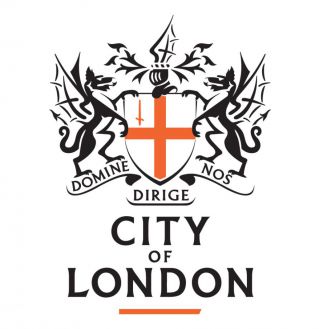New London Architecture
The Changing Face of London

Marking the 15-year anniversary of NLA, The Changing Face of London revisits the very first exhibition we hosted when we opened in 2005. The exhibition revealed the major regeneration sites an opportunity areas across London and provided for the first time a comprehensive view of the scale of change the city was going through.
Looking back to the past 15 years, The Changing Face of London reflects on the achievements, lessons learned and missed opportunities while also taking a look into the future, at a time when we have the chance to shape our city for the better in the aftermath of the Covid-19 pandemic. We present 15 aspirations for London that we want to see taking shape in the next 15 years.
For The Changing Face of London exhibition see here.
Looking back to the past 15 years, The Changing Face of London reflects on the achievements, lessons learned and missed opportunities while also taking a look into the future, at a time when we have the chance to shape our city for the better in the aftermath of the Covid-19 pandemic. We present 15 aspirations for London that we want to see taking shape in the next 15 years.
For The Changing Face of London exhibition see here.
EXCERPT FROM THE FOREWORD
London has been growing pretty consistently for over a thousand years, interrupted only by plague and political interference. Its 50,000 inhabitants in the 14th century were reduced by a third by the Black Death. The Great Plague of 1665 killed 100,000 out of a population of 460,000. By 1900 it was the largest city in the world with a population of six million.
Inspired by Ebenezer Howard and his antipathy to the overcrowded Victorian city, post-WW2 policies heralded 40 years of economic decline. The Abercrombie Plan, the new towns programme, the removal of manufacturing to rebalance the nation’s economy, and the Location of Offices Bureau caused London’s population to shrink by over a fifth between 1941 and 1992, losing two million people at a time of rapid growth in the UK’s wider population.
‘It no longer has a cohesive sense of identity. Its infrastructure has drastically declined. It is dirty, overcrowded, increasingly polarised between rich and poor, north and south.’ So ran the back cover blurb of “A New London” by Richard Rogers and Mark Fisher published in 1992; hardly a good advertisement for the “greatest city in the world”.
While there was no intentional plagiarism of its title, with the benefit of hindsight one can see how much NLA – and indeed London as a whole – owes to this publication and to Richard Rogers for his vision and foresight.
Rogers’ European view highlighted how poorly we were performing in comparison to cities like Copenhagen, Frankfurt, Paris, Barcelona and Madrid. The book quotes Jane Jacob’s inspired putdown, ‘Ebenezer Howard’s garden city was a place for Christopher Robin to go hoppity hop’; it checks out the renewed interest of the sort of intense public life that cities promote, calls for a coordinated, interventionist transport policy and looks to dense neighbourhoods with overlapping activities to reduce the need for commuting dormitories. ‘London with its myriad villages, parks and towns, is especially well placed to develop polycentrically. The challenge is to consolidate this structure into a dynamic urban conglomeration.’
Rogers’ co-author was Labour MP Mark Fisher and when the Blair Government won the 1997 election, he was a natural choice to chair the Urban Task Force which set the agenda for the Government’s urban renaissance policies.
These policies, to create a compact, mixed-use, well-connected and well-designed city, were adopted in the first London Plan published in 2004 by Mayor Ken Livingstone under Rogers’ guidance as Chief Advisor to the Mayor on Architecture and Urbanism. Key strategies were to create socially balanced and sustainable communities, optimise the potential of London’s available sites by linking transport and development opportunities and to improve London’s public realm.
The NLA started its journey a year later. In this exhibition and publication, we track the changes to the capital that have been guided by these ideas during the 15 years we have been in existence. Much has worked, although the divide between rich and poor remains. Nevertheless, re-reading ‘A New London’ is a reminder of the debt we owe to Richard Rogers and that at this moment of crisis we need, more than ever, farsighted thinking of this quality if we are to minimise the impact that our current plague will have on the future growth of London and the health and wealth of its citizens.
Over the next 15 years NLA will endeavour to provide the forum where new ideas can be discussed, promoted and put into action.
CONTENTS
004 Foreword
006 What has shaped London since 2005?
013 Who runs London
020 What have we learnt since 2005?
048 International Comparisons
054 Timeline 2005–2020
058 Planning London
062 50 Areas of Change
374 The View from 2020
384 London 2035 Checklist
385 Further Reading
388 Acknowledgements
390 Company Profiles
006 What has shaped London since 2005?
013 Who runs London
020 What have we learnt since 2005?
048 International Comparisons
054 Timeline 2005–2020
058 Planning London
062 50 Areas of Change
374 The View from 2020
384 London 2035 Checklist
385 Further Reading
388 Acknowledgements
390 Company Profiles
PUBLICATION details
Published September 2020
407 pages
407 pages
Related
Exhibition
At 12.5 metres-long, the 1:2000 scale London model covers more than 85 square kilometres of London, 19 Boroughs and appr...

Video
Heng Leong Cheong is CEO of developer EcoWorld. The company is involved in a number of joint ventures including London C...
Watch videoStay in touch
Upgrade your plan
Choose the right membership for your business
Billing type:
Standard
£150.00
/month
£1,695.00
/year

Make your business and team part of London's built environment community.
Standard (small business)
£60.00
/month
£695.00
/year

Make your business and team part of London's built environment community, at a discounted rate for small businesses (less than 10 employees)
Partner
£525.00
/month
£5,950.00
/year

Account managed membership to maximise your profiling opportunities across NLA's programme.
Borough Partner
£400.00
/month
£4,750.00
/year

Account managed membership to maximise profiling opportunities across NLA's programme.
View options for
Personal membership
















